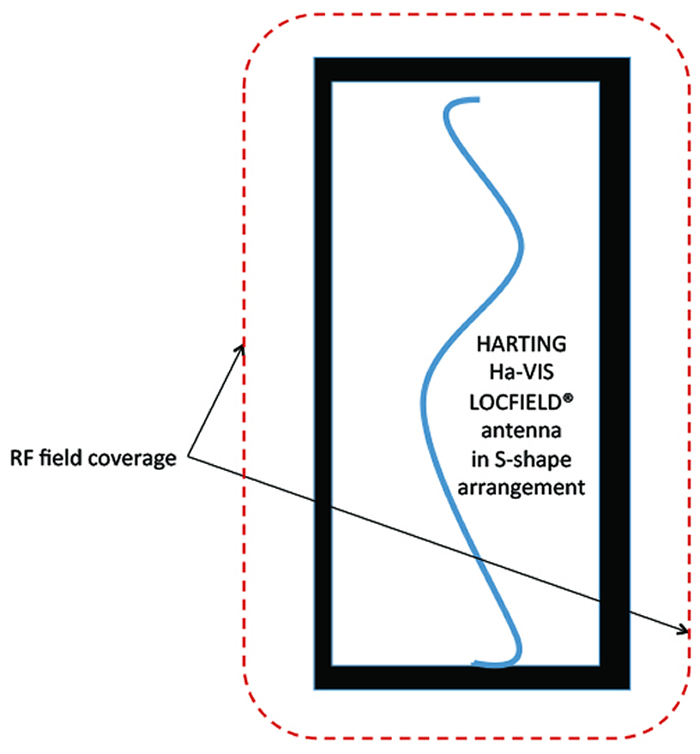Data center theft solved by real-time monitoring antenna
The physical security of IT equipment is often overlooked, as shown with regular headlines about the latest cybercrime attack stealing important or commercially sensitive data. One area in particular is the almost casual theft of small pieces of equipment from the racks. For example, the latest helium filled 10TB hard drive represent a £600 investment and with up to 22 drives used in a 4U storage array, loss through theft can be substantial.
The constant monitoring of what equipment is located inside the data center has additional benefits not only in terms of security but also in managing cooling air-flow requirements and power consumption, which support growing need to demonstrate compliance with Green IT initiatives.
In response, data centers have been increasingly looking for cost efficient solutions for key asset management. Data Centre Infrastructure Management (DCIM) is an emerging holistic management approach that combines traditional data center equipment and facilities with monitoring software for centralized control. DCIM includes physical and asset level components and by combining both information technology and facilities management it raises the effectiveness of a data center.
RFID has been seen by many as a key element to providing real-time monitoring of component location within the data center. By installing passive RFID tags on every removable component of the rack data center systems integrators and site operations managers can easily use them not only to record locations but more information about the device than they could before with standard asset tags.

But how you implement RFID monitoring is critical to the performance of the system.
Portable hand-held RFID reader systems have a very small UHF read range and only offer a slightly better performance than relying on paper records or barcodes because it requires employees to walk down aisles and identify the piece of equipment and its location. This is a very time-consuming task and as such is not undertaken very often. It also relies on the competence and integrity of the operator carrying out the check.
Up until now it has been unrealistic from a physical location point of view to directly integrate even the most compact passive RFID UHF patch antennas into existing data center server rack arrays.
Typically, four antennas would have to be separately mounted either side of the front of each server rack, in both the upper and lower areas and carefully positioned to ensure there are no gaps in the RF field coverage. Correspondingly, with such an arrangement it would also be necessary to utilize multiple readers, resulting in excessive installed cost.
HARTING now have a solution to remove this higher cost multiple patch antenna and reader arrangement with its innovative Ha-VIS RFID LOCFIELD coaxial cable waveguide antenna.
They can be directly integrated, with insulating spacers, onto the rear side of the front access door of each server rack. Only one of these Ha-VIS RFID LOCFIELD antennas needs to be fitted for a fully installed 45U sever rack. By fitting in an extended S-shape design (See Fig. 1) you can achieve the best possible RF field coverage of the complete rack. In conjunction with a single reader which has the required power to match the correct read distances, it can register passive RFID tags that provide specific item identification within a rack and additional sensor functionalities e.g. detecting empty or occupied slots, thus minimizing the complete data center system installation cost.
HARTING’s Ha-VIS RFID LOCFIELD is a travelling wave RFID antenna consisting of a coax cable that – when plugged into the antenna port of a HARTING UHF EPC Class1 Gen 2 reader – conveys the reader’s RF signal along the cable’s copper core and to the antenna’s far end, where a coupling element draws the RF wave out and onto the cable’s exterior. When that signal reaches the reader, a metal protecting shield prevents the interrogator from receiving its own signal and interfering with its performance. N.B. The Ha-VIS LOCFIELD antenna should not be mounted directly onto a metal surface but raised-off slightly with insulating spacers.
By its functional nature the Ha-VIS RFID LOCFIELD antenna facilitates real-time monitoring of movements in and out to the rack enclosure and is available in different lengths up to 10 meters and is 5mm in diameter. If used with a high-powered reader, such as HARTING’s Ha-VIS RF-R500 long range reader transmitting a signal of 4W (36dBm), it can read passive EPC Class 1 slot Gen 2 transponders located up to 2.5 meters away radially over its entire length. Put simply HARTING’s Ha-VIS RFID LOCFIELD antennas allow you to identify what is in a data center rack, its population status and where a specific item is located.
Datasheets and whitepapers available:


Comments are closed, but trackbacks and pingbacks are open.